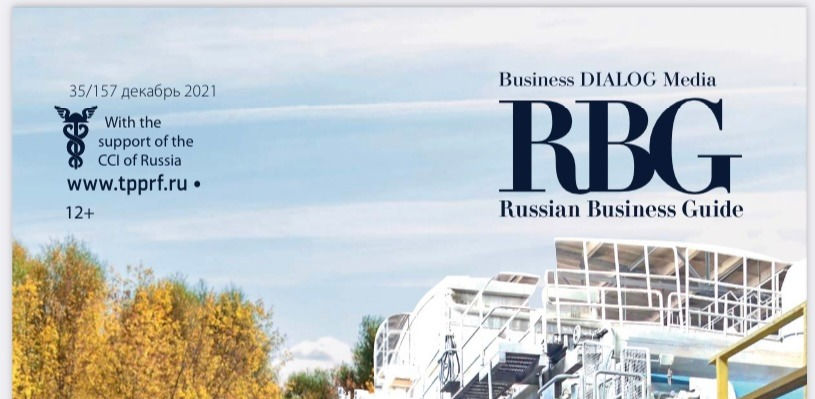The
It is the 7th among Russian subjects in respect of industrial production volume, 13th in respect of gross regional product (the regional export comprises 1,8% of general volume in Russia) and it is one of the five Russian regions with the largest production output per capita.
Among the Ural Federal District Subjects the
Over 1,5 million people are occupied in various branches of economics, that is 42% of the region population.
The
The density of railroads network is about 43,9 km per 1000 sq. km.
The density of automobile roads network is about 174,3 km per 1000 sq. km. The length of paved highways per 1 sq. km in the Ural region exceeds the average length by one third.
The
Industrial branches such as metallurgical, machine-building, metal processing, fuel-energetic, constructing and agro-industrial determine the whole region’s development.
Among the Ural Federal District Subjects the
Metallurgy
As far as metallurgy is concerned, the
Regional industrial policy concept defined the main problems of development of metallurgical complex and state support measures for the 2000-2005 period.
Ferrous metallurgy is represented by 28 large and medium-sized enterprises. The most important enterprises are:
· The largest enterprise in the country - the Open Joint Stock Company “Magnitogorsk Steel and Iron Works” (57,2% of metal production in the region);
· The Open Joint Stock Company "Mechel"(16,7%), specializing in the production of alloyed steel;
· The Open Joint Stock Company “
· Metallurgical plants located in the mining industrial areas of the Urals (OJSC “Ashinsk Iron and Steel Works”, OJSC “Magnetite Plant”, situated in Satka, OJSC “Satka Cast Iron Smelting”);
· Plants producing steel pipes and hardware (OJSC “Chelyabinsk Pipe Rolling Plant”, OJSC “Magnitogorsk Metise Iron & Steel Works”, CJSC “Miniar Metise Iron & Steel Works”).
Besides, ferrous metallurgy is represented by the old plants located in the mining industrial areas, i.e. in the city of
The main target of the ferrous metallurgy development in the
Investments needed for the renewal and modernization of the ferrous metallurgy of the region are estimated at approximately 17 milliard rubles for the 1999-2005 period.
Non-ferrous metallurgy
There are copper, zinc and nickel industries in the region. The first nickel industrial plant in
Non-ferrous metallurgy is represented by the enterprises of the following groups:
· Ore mining and processing enterprises (Open Joint Stock Company "Ore mining company of Alexandrinsk", Open JSC "South Ural Gold Association”);
· Nickel and cobalt industries (Open JSC "Ufaleynickel");
· Zinc industry (Open JSC "Chelyabinsk Electrolyte Zinc Plant");
· Copper industry(Closed JSC "Karabash Copper", Closed JSC "Kyshtym Copper Electrolyte Plant");
· Electrode industriy (Open JSC "Chelyabinsk Electrode Plant").
Copper, zinc, nickel, electrode products are the most important items of the production.
It is necessary to solve several problems for the successful operation of the non-ferrous metallurgical enterprises: to expand the internal and CIS markets of the metal production; to raise the competitiveness of the industries and their production; to speed-up the structural reorganization; to decrease the resources and power consumption of the industries; to attract the investments needed for industries' support and development; to raise the efficiency of exports, to improve the ecological situation in the areas where the enterprises are located.
Machine building and metal processing
Machine building is one of the key branches of the
The machine-building complex is represented by automobile industry (25,3%), tractor and agricultural industries (14,1%), lathes and instrument-making industry, metallurgical, road-building and municipal, electro-technical, shafting and mining machine-building as well as enterprises outputting constructions and articles of metal.
On an equal footing with ferrous metallurgical industrial complex and non-ferrous metallurgical industrial complex is the machine building and metal processing industrial branch, which is rather developed. Nowadays its share in the total industrial output comprises 14%, in the pre-reform period (1991) this share was two times as great.
Machine building and metal processing complex comprises heavy industry, in particular production of mining metallurgical equipment, wagons including streetcars, tractors, goods vehicles, road cars, etc. Enterprises of the
Such consumer goods as fridges “Polyus” and “Yuryuzan”, washing machines “Chaika”, radio equipment and watches of different brands are produced in the region.
The machine building and metal processing branch of industry is represented by 105 machine building enterprises, 17 enterprises producing metal constructions and instruments, 37 machine repair enterprises.
The number of enterprises is not the same in all cities. Most of them are situated in the city of
Many important enterprises of machine building and metal processing complex are situated in the cities of Troitsk,
The principal targets of machine-building industry are: to preserve and promote the scientific and technical potential; to reduce and restructure unprofitable enterprises and industries; to change the range of the goods produced; to apply the most useful elements of the industrial, scientific and technological potential of the defense machine-building to upgrade the civil machine-building.
The sufficient increase of capital investments is needed for the development of the machine building and metal processing industrial complex, the investment volume for the 1999-2005 period should comprise 1596,7 million rubles including 833,5 million rubles of capital investments and 39,3 million rubles of the Scientific and Experimental Research Institute of Machine Building.
Conversion of the defense enterprises
There are about 30 enterprises and organizations of defense industrial complex in the
Defense industrial complex enterprises are traditional among large producers of tramcars, metal cutting machine tools, air traffic control systems, civil aircrafts and helicopters navigation systems, landing control systems, excavators, navigation devices for navy ships and air fleet, household appliances, refrigerators, cleaning, laundry and kitchen equipment, radio receivers, electrical engines as well as galvanic elements, synthetic piezoelectric elements, ceramic radio articles and a number of other products.
Due to the advanced conversion of military enterprises over the last years, a wide range of complex consumer goods are produced along with goods for many industrial branches, agriculture with its reprocessing branches as well as for ecology, medicine, energy savings, transport network and communications.
One of the priorities in the enterprises development and military industry structuring is to expand export supplies of both civil and defense industryial goods. The main advantage of export orientation is the possibility to draw considerable funds into enterprises instead of using money surrogates available currently on the Russian domestic market.
Since 2002 the enterprises of defense industry have been transferring into the stage of reforms and re-construction according to the federal program titled “Reforms and development in the Defense Industry (over 2002 – 2006) approved by enactment of the RF government on
Fuel and energy complex
Massive industry of the South Ural cannot function without fuel and energy supplies. Fuel industry is represented by coal branch and
Fuel and energy complex is represented by electric power generating industry, coal mining, fuel industry, trunk pipeline transport.
Since 1999 total coal mining has decreased by 2 times. Half of all coal supplies are explored on the surface, because their deposits are not very deep. Kopeisk is the main coalfield center. It was founded as a miners’ village in 1906 and was called Chelyabinskie Kopi. The other half of coal supplies explored on the surface are in Korkino. Korkino is situated 35 km away from
There is a tendency for growth in energy consumption, especially in agriculture and transport.
Taking into consideration the power-consuming character of the key industries of the region there exist vast possibilities for inculcation of the energy-saving technologies.
The main part of consumption of fuel resources falls on coal (about 50%) and natural gas (about 40%).
Coal-mining enterprises of the
The demand for natural gas and oil products is covered completely by their delivery from the other regions.
The fuel and energy complex of the region has many branches; it supplies hundreds of enterprises with energy. Energy is produced mostly on Troitskaya, South Ural Hydro Electric, Argayash and
Electric power stations of the region provide about 65% of the total demand for electric power.
In 2003 the electric power stations of
The key enterprise of the electric power industry in Chelyabinsk region is OJSC “Chelyabenergo” (454000, Chelyabinsk, Revolutionary square 5, tel: (351) 267-83-50, 263-96-14, http://www.chel.elektra.ru) The total energy output by the regional electric power stations is 39% of the whole electric energy generated in the Chelyabinsk region. The energetic system of “Chelyabenergo” is an integrated part of the single energetic network of the
In addition to OJSC “Chelyabenergo”, a large generator of the electric energy is OJSC “Troitskaya Hydro Electric Power Station”. This enterprise is an associated joint-stock company of JSC UES (Russian Joint Stock Company of the Unified Energy Systems). The station has the planned generation capacity of 2500 MWt. In 2002 there was generated 28% of the total energy volume in the region.
A number of large enterprises in the
The principal aims of this complex are: restructuring of the coal-mining industry of the region; technical refurbishing and upgrading of the Fuel and Energy Complex of the region; gasification promotion in industry, electric power generation, municipal and consumer services; creation of the power generating capacities on the basis of the up-to-date gas-turbine technologies and thermoelectric power stations with circulating fluidized beds; carrying out the policy of energy-saving and increasing the utilization efficiency of the fuel and energy resources by means of technical and technological re-equipment of the industries along with the rapid reduction of their power consumption.
Total reconstruction and development of the fuel and energy industrial branch requires 1332, 1 mil. rubles of region’s investments during the period of 1999-2005.
Constructing complex (building materials industry)
Light and food-processing industries
Light and food processing industries are mainly represented by flour threshing, leather footwear, clothing and textile enterprises. In terms of new market system there has been opened a lot of mini-bakeries, small workshops processing meat and milk and producing cheese in the region.
Agriculture
Agricultural sector in the region is well developed. In gross domestic product the share of agricultural complex is about 4,6 %. The
The main part of the territory is situated in the steppe zone. 2/3 of cereals are spring wheat. Another part of the region’s territory sown with cereals is represented by rye and millet. Potato crops are of great importance. Among industrial cultures sunflower is the most widespread. Fodder crops are the basis for animal husbandry. They are mainly grown on natural arable and pasture lands (about 1 million hectares).
Gardening is also very popular. More than 600 thousand gardens joined 860 garden partnerships. Their area surpasses 32 thousand hectares.
Other industrial branches
The
Timber processing industry (sawmill and woodworking industry) is concentrated in the cities of
-
Практика внедрения ИИ и цифровых роботов в бизнес: как руководители экономят миллионы
12 ноября 2025 года в 11:00 компании «Первый Бит» и PIX Robotics проводят закрытый бизнес-завтрак для руководителей, топ-менеджеров и ключевых...
31.10.2025226 -
О ситуации на российско-казахстанском участке государственной границы
ФТС России обращает внимание: таможенные органы не осуществляют проверочные мероприятия в пунктах пропуска на границе России и Казахста...
30.10.2025380 -
Foodatlas пример участие в выставке «ПИР Экспо» 2025
С 27 по 30 октября 2025 года в г. Москва, МВЦ "Крокус Экспо", пройдет крупнейшее профессиональное мероприятие для индустрии H...
28.10.2025365











